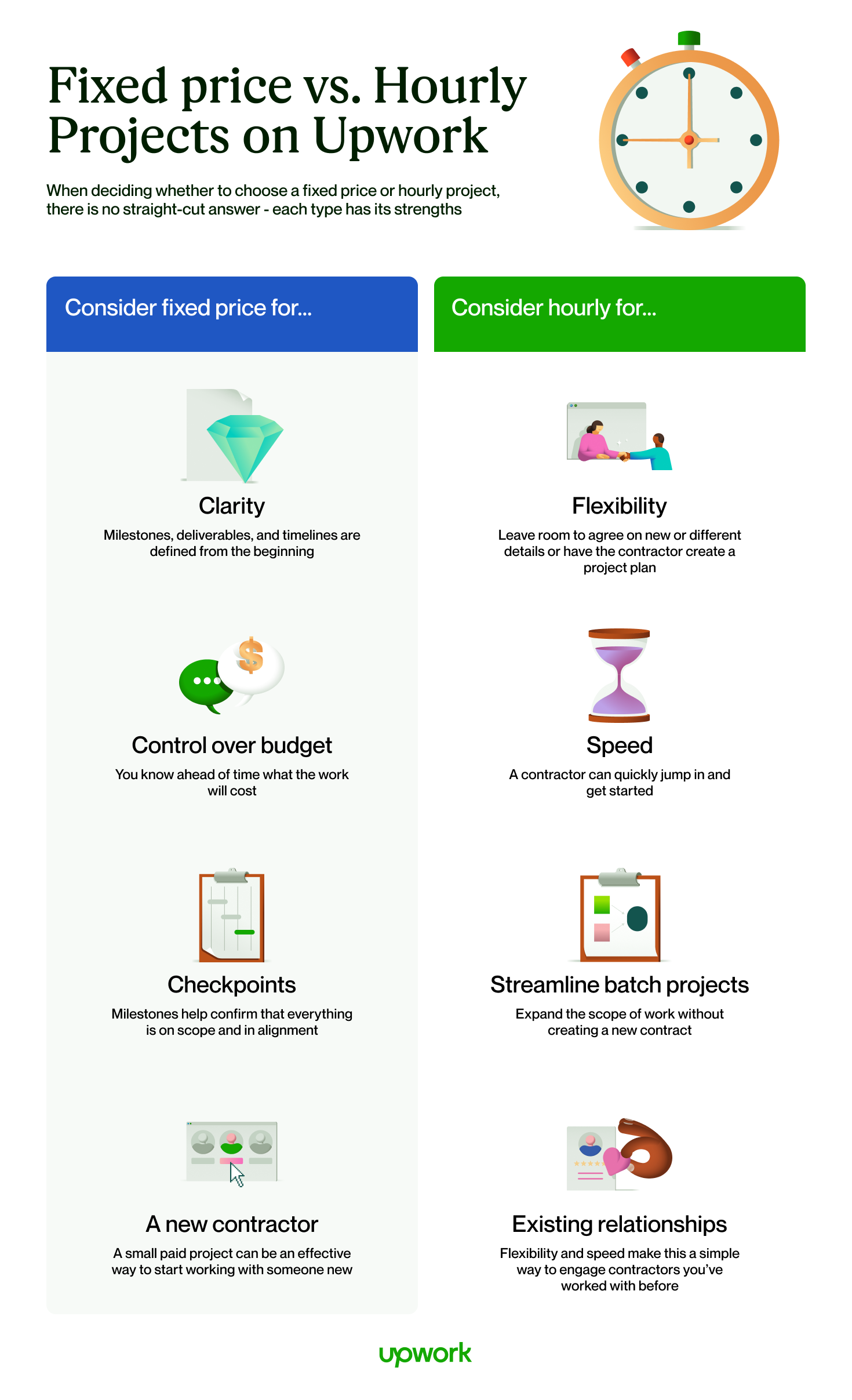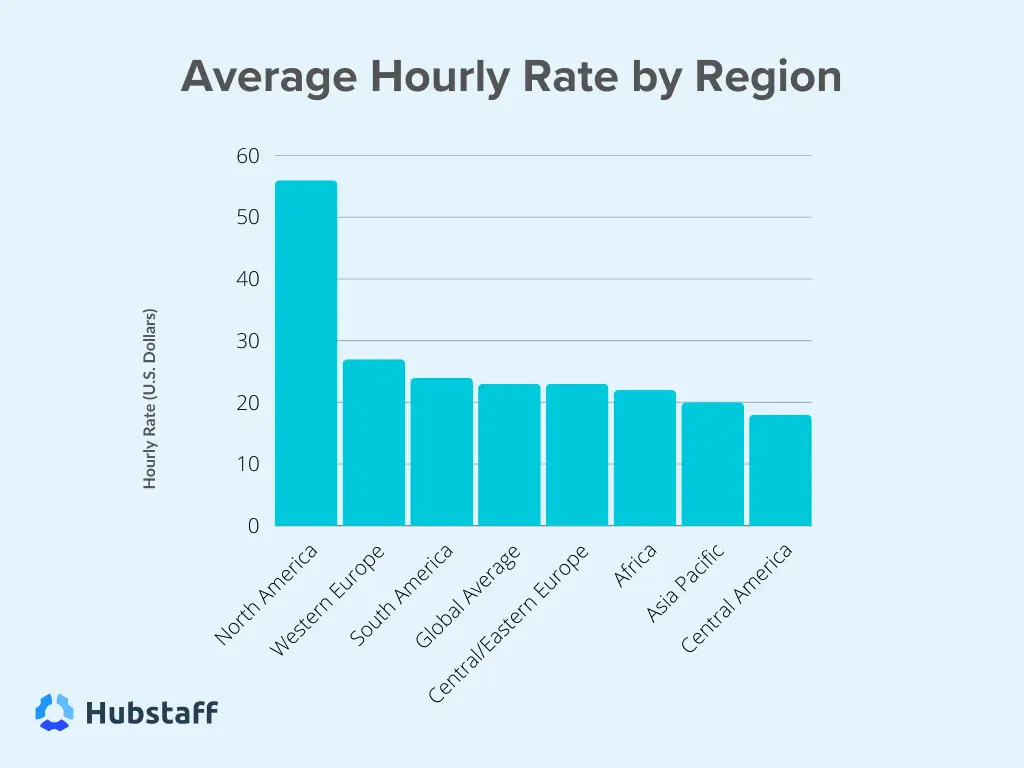Setting your freelance rates isn’t just about throwing out a number. It’s about knowing your value and balancing that with the market.
Too high, and clients might look elsewhere. Too low, and you’ll burn out before reaching your goals. Your rates should reflect your skills, the value you bring, and your business needs.
If you’re not confident about your pricing, you’ll struggle to grow. Your rate impacts the type of clients you attract and the quality of work you take on.
I know because I’ve freelanced for 10+ years. And, in this article, I’m going to teach you how to set your freelance rates and avoid common pitfalls.
Follow along!
Why is Setting Freelance Rates Difficult?
Setting freelance rates is tough because it’s not just about picking a number—you’re balancing a lot of factors.
First, you have to overcome the fear of scaring off potential clients. Many freelancers lowball their rates, thinking it’ll help them win jobs, but this only undervalues their work.
Another issue is pricing inconsistency in the market. You might see huge gaps in what different freelancers charge for the same service. Plus, many freelancers don’t account for hidden costs like taxes, software, and business expenses.
Then, there’s the psychological challenge. It’s hard to confidently charge what you’re worth when you’re new or when clients push back on pricing.
Understanding these elements will help you become aware of what’s holding you back to make a plan of action.
That brings me to my next point.
Hourly Rates vs Per-Project vs Value-Based Pricing
When it comes to setting freelance rates, you’ll usually fall into one of three categories: hourly, project-based, or value-based pricing. Each approach has its strengths and weaknesses, and understanding which one is right for you can make all the difference.
Hourly pricing is straightforward: you charge for the actual hours worked. It’s easy for clients to understand, and it allows you to be compensated for all the time you put in.
But hourly pricing can cap your earnings since you’re trading time for money. No matter how efficient you get, you’re limited by the number of hours in a day. Plus, clients might start focusing on the clock rather than the value of your work.
Project-based pricing is when you charge a fixed fee for a specific project. This approach rewards efficiency. The quicker you finish, the more profitable it becomes.
Upwork put together a nice infographic that sums this up. Check it out.

Clients like this model because they know upfront what they’re paying, and there’s less back-and-forth about hours worked. However, pricing a project correctly can be tricky.
If you underestimate how long something will take, you risk getting stuck in a low-profit situation. It’s crucial to factor in revisions, scope creep, and any potential delays when setting a project rate.
Value-based pricing takes it a step further by focusing on the value your work delivers to the client rather than the time or effort involved. You’re charging based on the results you create, whether it’s increased sales, better brand recognition, or stronger customer retention.
This model can be the most lucrative, but it requires a deep understanding of the client’s needs and the potential impact of your work. It’s harder to sell because it demands a clear connection between your work and the client’s return on investment. But if you can nail it, you can charge significantly more for the same amount of work.

Ultimately, choosing between hourly, project, or value-based pricing depends on your experience level, the type of work you do, and how comfortable you are in communicating your value to clients.
As you grow in your freelancing journey, you might even switch between these models depending on the client or project. Just remember, the goal isn’t just to get paid—it’s to ensure that your rates reflect the value you provide while keeping your business sustainable.
Step-by-Step Setting Your Freelance Rates
Setting your freelance rates doesn’t have to be complicated, but it does require a systematic approach. Here’s a step-by-step guide to help you find a rate that’s both competitive and fair for you.
What’s Your Expenses?
First, figure out your monthly expenses. This includes rent, bills, food, insurance—anything you need to cover your living costs. Then add in your business expenses like software subscriptions, marketing, or taxes. Once you have your total, you’ll know what you need to make just to survive. But your rates shouldn’t just be about surviving, right?
How Often Can You Work?
Next, decide how many billable hours you can realistically work in a month. Let’s say you plan to work 160 hours a month. You might think, “I’ll bill 160 hours,” but in reality, you won’t. Admin tasks, marketing, and downtime will eat into those hours. So be realistic—maybe you’ll only be able to bill 100 hours. Divide your total monthly expenses by those billable hours to get your baseline hourly rate.
This is Your Minimum Rate
That’s your minimum rate—but don’t stop there. Now, research market rates for your industry. Look at what other freelancers with similar experience charge.
You can check freelance platforms like Upwork or Fiverr, but also talk to other freelancers or look up salary data on sites like Glassdoor. Aim to set your rate higher than the minimum you calculated, especially if you have specialized skills or experience.
Your Experience and Skill
Next, consider your experience and demand. Are you just starting out, or do you have years of experience? More experienced freelancers can charge more because they bring a higher level of expertise. But it’s not just about experience—it’s also about demand. If your skills are in high demand, you can command higher rates. Think about how your niche affects your rates.
Decide on a Pricing Model
Now, decide if you’re charging hourly, per project, or value-based. Hourly works when clients want to see direct work, but it can limit how much you can earn. Per-project pricing allows you to charge based on the work you produce, rewarding efficiency. Value-based pricing lets you charge based on the outcome or value you’re providing—this is where the real money is if you can align your work with client ROI.
Test Your Rates Over Time
Finally, test and adjust your rates. Your first rate won’t be your forever rate. As you get more clients and refine your skills, you should revisit your pricing. Track how clients respond to your rates and how they affect your workload.
If you’re fully booked, it might be time to raise your rates. Conversely, if you’re struggling to land work, it might be worth rethinking your positioning or offering.
This approach takes the guesswork out of setting your freelance rates and gives you a clear path to not just surviving, but thriving as a freelancer.
What is The Average Freelance Rate?
When it comes to figuring out the average freelance rate, there’s no simple answer. It depends heavily on your industry, experience, and location. However, some data gives us a clearer picture.
According to a survey from Hubstaff, the average hourly rate for freelancers in North America sits around $55 per hour. But that’s just a starting point.

For example, designers and developers often charge more, with developers typically ranging from $30 to $150 per hour, depending on specialization.
Copywriters and content creators usually fall between $50 and $100 per hour if they’re experienced. On the lower end, entry-level freelancers might start at $15-$25 an hour in certain fields, but that jumps as skills grow.
Freelancers working in tech or specialized niches can push much higher rates. Take developers specializing in AI or blockchain, where hourly rates can surge well over $150 depending on the complexity of the project. In contrast, basic data entry or virtual assistant services might average around $10 to $20 an hour.
Geography plays a big role, too. Freelancers in Western Europe or North America command higher rates than those in South Asia or Eastern Europe, although the gap is shrinking as the global market grows more competitive.
The key takeaway is that the average freelancer rate isn’t static—it’s dynamic and influenced by several factors. If you’re serious about pricing yourself competitively, don’t just look at industry averages.
Consider your skill level, client demand, and the unique value you bring. Use the averages as a reference point but be prepared to adjust based on your niche and expertise.
If you’re delivering results that have a direct impact on a client’s bottom line, don’t hesitate to charge accordingly.
How to Raise Your Rates as a Freelancer
Raising your freelance rates isn’t as daunting as it sounds, but it does require strategy. First, you need to ensure you’re consistently delivering results that justify the higher price point. Clients won’t pay more unless they’re getting more—more value, more expertise, more efficiency.
Start by improving your skills. Get certifications, take specialized courses, and expand your portfolio with high-quality work. As you upskill, you create a compelling reason to raise your rates. This shows clients that you’re not the same freelancer they hired months ago.
Another powerful move is to specialize. Generalists often struggle to command higher rates. But when you’re the go-to person for a specific niche, you can charge premium prices. For example, if you’re a writer, become the expert in SaaS content or long-form B2B copywriting. Specialists get paid more because they bring expertise that generalists don’t.
Next, build a reputation for delivering ROI. This is key. If you can show that your work has brought tangible results—whether it’s increased revenue, more traffic, or improved brand awareness—you can position yourself as a valuable investment rather than just a service provider. Clients will pay more if they believe your work will lead to better outcomes.
When you’ve positioned yourself as more valuable, it’s time to communicate your rate increase. Timing is crucial here. After you’ve delivered a major project with positive results, send a detailed message explaining your new rates.
Be confident, but respectful. Make sure you focus on the value they’ve gained from working with you, and explain how you’re continuing to grow as a professional. Offer a clear explanation for the price change, but don’t apologize or act like you’re doing something wrong by charging more.
If you’re worried about losing clients, you can offer a transition period. For instance, let them know the new rate will take effect after the current project ends. This helps ease them into the idea without feeling blindsided.
Lastly, not all clients will be able to accept the rate increase. That’s okay. You need to be comfortable with letting go of low-paying clients to make room for higher-paying ones. The goal is to work smarter, not harder. Charging more for fewer clients gives you the bandwidth to deliver higher-quality work and scale your freelance business.
With these tactics, you’ll not only raise your rates but also command higher-paying projects that match the true value of your work.
Freelance Pricing Mistakes to Avoid
When it comes to freelance pricing, there are a few common mistakes that can really hurt your income or business growth. Here’s what to avoid:
- Undercharging out of fear – Many freelancers, especially beginners, set their rates too low because they’re afraid of losing clients. But undervaluing your work not only hurts your bottom line but also makes it harder to raise rates later.
- Not factoring in all your costs – Your rate isn’t just for the work you do. You also need to cover overhead like software, insurance, marketing, taxes, and downtime between clients. Failing to account for these expenses can leave you struggling financially even if you’re working full-time hours.
- Ignoring scope creep – A big pricing mistake is not defining the scope of work upfront. This leads to “scope creep,” where clients gradually ask for more tasks than originally agreed upon without additional pay. Always have a clear contract outlining what’s included in your rate and charge extra for any added work.
- Competing only on price – Trying to win clients by offering the lowest price is a fast track to burnout. Clients who choose freelancers based solely on price often don’t value quality or long-term relationships. Instead of lowering your rates, focus on delivering value and specializing in a niche that allows you to charge more.
- Not increasing rates over time – If you’re not reviewing and adjusting your rates as you gain experience and improve your skills, you’re leaving money on the table. Regularly assess whether your rates reflect your current expertise and the value you bring to clients.
- Failing to research the market – If you’re not checking what others in your industry and location are charging, you might be drastically under or overcharging. Research average rates within your niche and use that as a baseline.
- Offering too many pricing options – Trying to please every client with too many pricing packages can create confusion. It’s better to keep things simple and clear. Offer two or three well-thought-out options that align with your client’s goals rather than overwhelming them with choices.
Avoiding these mistakes will help you price your services more strategically and increase your chances of long-term freelance success.
Wrapping Up How to Set Freelance Rates
Setting the right rate as a freelancer isn’t just about hitting a number that feels good today. It’s about building long-term sustainability in your business. You need to find a balance between what clients are willing to pay and what will keep you motivated and growing.
The right rate lets you cover expenses, save for future goals, and build a cushion for slow periods. Start with understanding your value and the market, then factor in experience, demand, and client results. Always remember that underpricing can lead to burnout while overpricing can alienate potential clients.
Once you set your rate, it doesn’t mean it’s fixed forever. Regularly reassess based on your workload, the value you deliver, and your overall goals. As your skills improve, your rate should follow. Don’t be afraid to raise your rates, but communicate why you’re doing so—like improved results or expanded services. Clients will value your growth, and those who don’t might not be a fit for your business anymore.
Lastly, setting rates is not just about numbers—it’s about positioning. Are you trying to attract premium clients? Focus on value-based pricing that ties directly to the ROI you provide. Want a broader range of clients? Offer tiered services, allowing clients to choose packages that suit their budget while ensuring your compensation is fair.
Schedule a free consultation to learn more about my marketing services that will help your business drive more revenue.














